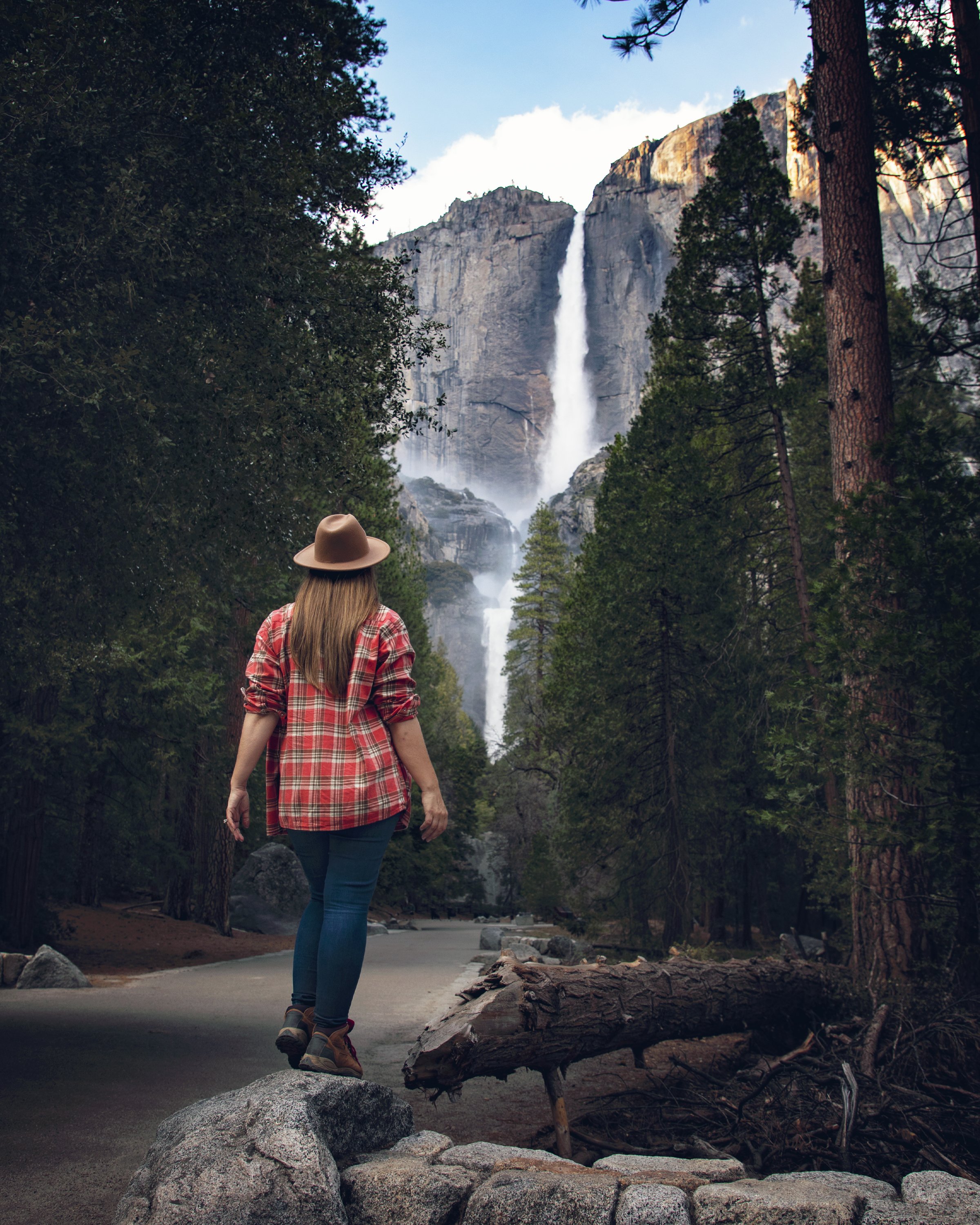Discovering Wind Wolves Preserve in the Central Valley
This week we’re in central California exploring numerous hiking trails, rich cultural history, and diverse landscapes found inside a lesser visited ecological oasis. Join me at Wind Wolves Preserve.
Wind Wolves Preserve, Administrative Center
Redtail Trail, Wind Wolves Preserve
History
Native Americans (including the Chumash) inhabited and thrived in this area until the Spanish colonization during the 18th century. In fact, Wind Wolves is believed to be home to one of the most noteworthy Native American rock art in North America. At one time both wolves and grizzly bears roamed this area, but they have both been gone for well over a century…the name Wind Wolves actually refers to the way the tall grasses sway in the wind here, resembling animals running through them.
The land became a cattle ranch in the mid-1800s and then changed hands several times. At one point it belonged to Tenneco Oil before being acquired by the Wildlands Conservancy in 1996. This nonprofit sought out to provide a vital habitat to endangered species and to address the need for access to outdoor spaces in California’s rural Central Valley.
Limestone Waterfall, Wind Wolves Preserve
Location & Attractions
The preserve is located 90 miles north of Los Angeles and 40 miles south of the city of Bakersfield. From the base of the Grapevine along the I-5, Wind Wolves is accessed by driving Highway 166 west toward Maricopa for 9.5 miles. A large sign marked "Wind Wolves Preserve" directs you to turn left onto the access road, which travels south for 3 miles before proceeding through the main entrance gate of the preserve.
Wind Wolves is open to the public from 8am to 5pm seven days a week and admission is free for all ages. Biking, picnicking, camping, and wildlife viewing are all popular activities here. The administrative/visitor center is a great place to start to get information about trails, the campground, and special events at the preserve, such as guided walks and night hikes. Just past the administration building is an area known as “The Crossing,” which is home to picnic tables, a small pond, and a bridge that crosses the path, leading to one of the preserve’s most surprising features, a year round 15 foot waterfall.
Caves at Wind Wolves Preserve
Prehistoric Rock Art
Wind Wolves is also home to some of the best Native American archaeological sites in the country. The Chumash Tribe lived in this area for thousands of years up until the 18th century, when sadly their numbers were decimated by European exploration and colonization. However, what was left behind on these lands is quite remarkable. The Plieto and Cache Caves are highly complex and fragile cave systems with some of the finest examples of prehistoric rock art in the world. In an effort to preserve these sites, these caves are off-limits to visitors. Prior to the pandemic, a virtual reality tour was offered at the Ranger Station, which hopefully will be available again soon. Make sure to ask the docents at the visitor center for up-to-date information.
Valley Oak Tree, San Emigdio Canyon Trail Wind Wolves Preserve
Hiking
Of course one of the most popular activities here has to be hiking. The preserve is home to 7 distinct trails covering over 30 miles.
Just past the entrance gate to the preserve you’ll find the Wildflower Loop Trail. This is an easy hike at just under a mile round trip with around 200 feet in elevation change. Bakersfield cactus, an endangered species, has been restored here, and while you can hike this trail anytime of year, it is most stunning in early Spring (February & March) when the wildflower bloom is peaking. The El Camino Viejo Bike Trail clocks in at just over 10 miles out and back…both hiking and biking are permitted here and the path has a gradual incline of over 1,000 feet out with minimal shade along the way. The San Emigdio Canyon Trail parallels San Emigdio Creek and is one of the few hikes to offer intermittent shade along the way. A short hike to Raven’s Landing offers stunning views of San Emigdio Canyon to the south and the San Joaquin Valley to the north…and with just under 1,000 feet in elevation change in 8 miles, you’ll feel your heart pumping along this trail. Connecting to this trail you can add the Reflection Pond Trail, which is a steady incline leading to Reflection Pond, a sag pond that can be all but dry after the hot Central Valley Summer months. This pond is surrounded by large sandstone rocks containing Chumash bedrock mortars.
Wildflower Loop Trail, Wind Wolves Preserve
The Tule Elk Trail is a popular hike that starts off on a steep incline to the Tule Elk Overlook. In 1998, the Wildlands Conservancy collaborated with the California Department of Fish and Wildlife to reintroduce 19 tule elk to their historic range. The herd has grown to over 400 elk and plays an important role in the preserve’s ecosystem. This trail continues and offers excellent views of San Emigdio Canyon to the south and the San Joaquin Valley to the north. You can then return to the Crossing parking lot via the El Camino Viejo Bike Trail for a total trip of 7.4 miles and nearly 1,000 feet in elevation change.
Red Tail Trail is the longest and most strenuous trail inside the preserve at 18 miles round trip with over 1,500 feet in elevation change. This trail winds through the back country, past wonderful rock formations and Reflection Pond. Limited equestrian use is available for pre-approved equestrian groups.
Endangered Bakersfield Cactus, Wind Wolves Preserve
Wildlife & Ecosystem
Wind Wolves Preserve is wonderfully unique of over 30 square miles where the Transverse Ranges, Coast Ranges, Sierra Nevada, Western Mojave Desert and San Joaquin Valley influences converge. The landforms range in elevation from 640 to 6,005 feet above sea level and the habitats here serve as a critical landscape linkage and wildlife corridor between the Coast Ranges and Sierra Nevada. Wind Wolves is home to one of the largest stands of the endangered Bakersfield cactus. The preserve’s main wetland is home to the Buena Vista Lake ornate shrew—one of the most endangered mammals in the United States. The conservancy’s restoration of hundreds of acres of wetlands has recruited over 5,000 nesting pairs of the endangered tri-colored blackbird. Restoration of salt bush to the grasslands has played an important role in bringing back the endangered kit fox and blunt-nose leopard lizard.
The Crossing, Wind Wolves Preserve
Know Before You Go
• Please remember the Leave No Trace Principles on your visit — pack it in, pack it out, and leave what you find. All natural features are protected here, so allow others a sense of discovery by leaving rocks, plants, archaeological artifacts and other objects of interest as you find them.
• Summer months can be extremely hot and shade is minimal here, so please remember to bring plenty of water, sun protection and always prepare for your hikes…and tell someone your plans ahead of time.
• Drones are strictly prohibited at Wind Wolves Preserve, and dogs must be kept on leash at all times.
• This preserve is home to elk, black bear, mountain lions, and rattlesnakes, so always stay alert on the trails and learn about wildlife through quiet observation. Please do not disturb wildlife or plants just for a “better look.”
• Always stay on maintained trails, both to protect and respect the natural plant life here, but also to protect yourself from stinging nettle, poison oak, and ticks, which are abundant in this area.
• Please check the official Wind Wolves website for the most up-to-date information on trails and where bikes/horses are allowed.
• Wind Wolves access is always free to all visitors and the Wildlands Conservancy’s preserves are operated solely with private funding. For information about donating, visit their official website here.
El Camino Viejo Bike Trail, Wind Wolves Preserve
In Summary
Thanks so much for joining me this week at Wind Wolves Preserve. For a virtual visit, see my Behind the Blog video at the top of this post or watch it on YouTube here. Until next week, I hope you find adventure and encouragement wherever you go.
View of the Tule Elk Trail, Wind Wolves Preserve
If you enjoyed this post, you might also like…
About Me
I’m Dawn Marie, a travel and lifestyle blogger based out of Southern California. With in-depth articles, travel guides, and reviews on hotels & products, I seek to share my journeys to help you plan for your own. My adventures take me all over California, the western United States, and around the globe...and every Monday I post new content here, including a comprehensive blog post and YouTube video.
Search the Blog
Featured Posts
Etsy Shop
























When is the best time to visit Yosemite National Park? This seasonal travel guide breaks down spring, summer, fall & winter in Yosemite—what the park looks like, pros & cons of each season, top places to visit, and expert tips to help you plan the perfect road trip. Find out the best time to see raging waterfalls, fall colors, spring wildflowers, abundant wildlife, or snow-capped granite peaks.